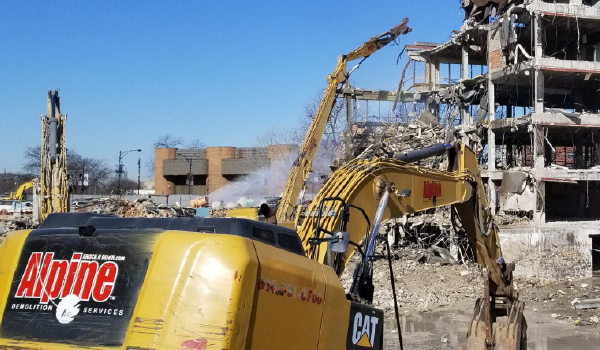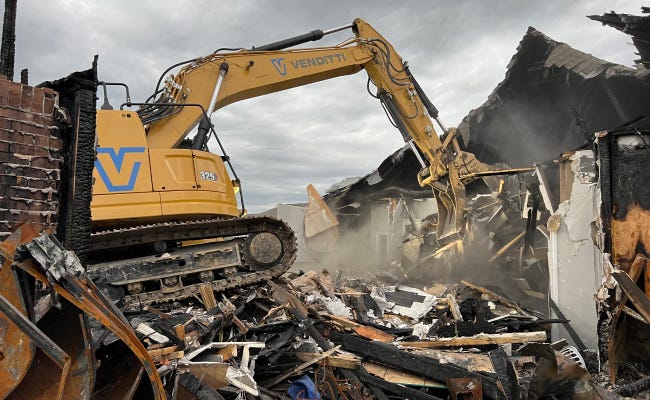Economical Solutions for Interior Demolition Providers
Necessary Steps for Reliable Inside Demolition Projects

Website Analysis
Conducting an extensive website evaluation is extremely important prior to starting any type of indoor demolition project to ensure safety and effectiveness throughout the procedure (interior demolition). A thorough website assessment entails evaluating various elements such as the structural integrity of the building, visibility of unsafe materials like asbestos or lead, and the identification of any prospective dangers that can impact the demolition work
The very first step in the site assessment process is to take a look at the structure's plans and building and construction history to comprehend its design and any modifications that may have been made over the years. This details is vital for developing a demolition plan that considers the building's prospective obstacles and special qualities.
In addition, an extensive assessment of the website should be conducted to identify any kind of existing threats or ecological concerns. This includes monitoring for the presence of mold and mildew, asbestos, or lead-based paint, which require specialized handling and disposal procedures to make sure the safety and security of residents and workers.
Obtain Permits
Previous to launching any interior demolition task, it is crucial to make sure that all essential authorizations are gotten in compliance with regional policies and building regulations. Obtaining authorizations is an essential action in the planning procedure to guarantee that the demolition work is carried out lawfully and safely. Failure to secure the called for authorizations can cause costly fines, task hold-ups, and also legal activities.
The certain permits needed for an interior demolition project might differ relying on the place and range of the work - interior demolition. Typical permits that might be called for consist of a demolition license, asbestos abatement permit, and potentially even a basic building permit. It is important to research and recognize the authorization demands in your area to stay clear of any kind of possible issues during the project
To get licenses, you generally require to submit thorough plans and paperwork describing the extent of work, security steps, and ecological factors to consider. Collaborating with a certified specialist or speaking with regional authorities can assist improve the authorization application procedure and ensure that all necessary approvals are obtained before starting the demolition task.
Safety Safety Measures
Guaranteeing the implementation of complete safety precautions is vital when taking on an interior demolition project. Regular security inspections throughout the demolition procedure are essential to ensure compliance with safety and security standards and regulations. By prioritizing safety and security precautions, indoor demolition jobs can be brought out efficiently while reducing dangers to employees and spectators.
Devices Preparation
To promote a smooth and effective indoor demolition task, thorough interest to equipment preparation is vital. Correct tools prep work important site ensures that the tools needed for the project are in optimal condition, minimizing the threat of malfunctions or delays throughout the demolition process.

Correct training on exactly how to run the devices safely needs to also be provided to all group participants included in the demolition task. By investing time and initiative into devices preparation, interior demolition tasks can be performed successfully and properly, leading to successful results.
Waste Administration
Effective disposal of particles and materials is an important aspect of indoor demolition tasks. Proper waste management not just makes certain a well organized and risk-free worksite the original source yet also contributes to environmental sustainability. To properly manage waste during an interior demolition project, it is crucial to have a well-balanced strategy in position. This strategy ought to include segregating different sorts of waste such as wood, steel, concrete, and hazardous materials to facilitate recycling and proper disposal.
Using different containers or containers for different waste products can simplify the arranging process and make it easier to move products to recycling facilities or garbage dumps. Identifying these containers clearly can help prevent confusion you could try these out and make sure that each kind of waste is disposed of correctly. Furthermore, dealing with reputable waste administration companies can help indoor demolition tasks stick to guidelines and best practices for waste disposal.
Conclusion

Previous to launching any indoor demolition project, it is important to make certain that all essential authorizations are obtained in compliance with neighborhood policies and structure codes.The particular authorizations needed for an indoor demolition task might vary depending on the location and range of the work.Making certain the implementation of complete safety and security precautions is vital when taking on an interior demolition job. By focusing on safety precautions, interior demolition projects can be brought out effectively while decreasing threats to employees and bystanders.
In final thought, effective interior demolition jobs call for extensive site analysis, getting permits, applying safety preventative measures, correct devices preparation, and effective waste management.